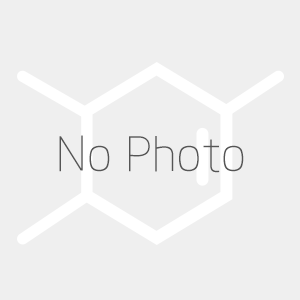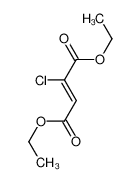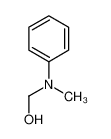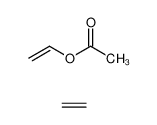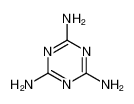| Product name | N,N-dimethylaniline |
|---|
| Product number | - |
|---|---|
| Other names | N,N-Dimethylbenzeneamine |
| Identified uses | For industry use only. N,N-Dimethylaniline is used as an intermediate in the manufacture of vanillin, Michler's ketone, methyl violet, and other dyes and also as a solvent, an alkylating agent, and a stabilizer. (-,,) |
|---|---|
| Uses advised against | no data available |
| Company | MOLBASE (Shanghai) Biotechnology Co., Ltd. |
|---|---|
| Address | Floor 4 & 5, Building 12, No. 1001 North Qinzhou Road, Xuhui District, Shanghai, China |
| Telephone | +86(21)64956998 |
| Fax | +86(21)54365166 |
| Emergency phone number | +86-400-6021-666 |
|---|---|
| Service hours | Monday to Friday, 9am-5pm (Standard time zone: UTC/GMT +8 hours). |
Acute toxicity - Oral, Category 3
Acute toxicity - Dermal, Category 3
Acute toxicity - Inhalation, Category 3
Carcinogenicity, Category 2
Hazardous to the aquatic environment, long-term (Chronic) - Category Chronic 2
2.2 GHS label elements, including precautionary statements| Pictogram(s) | 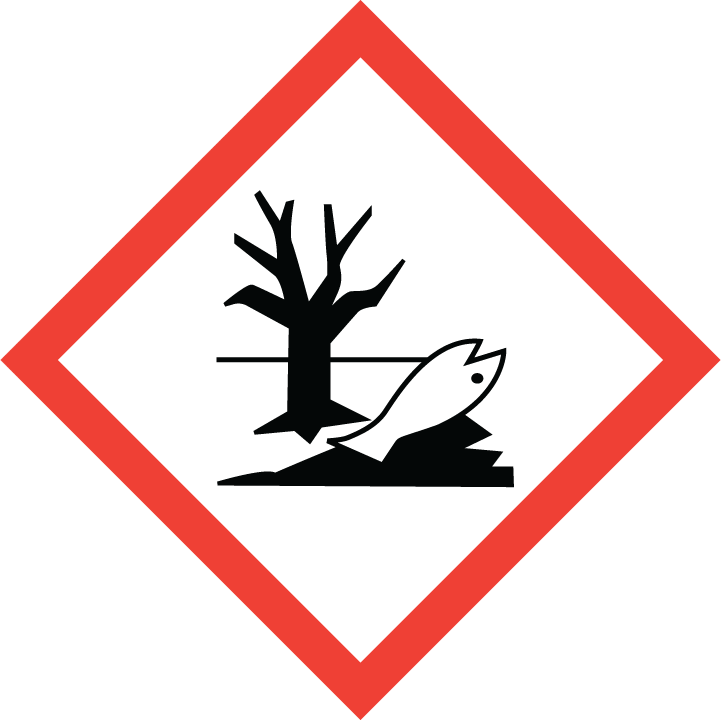 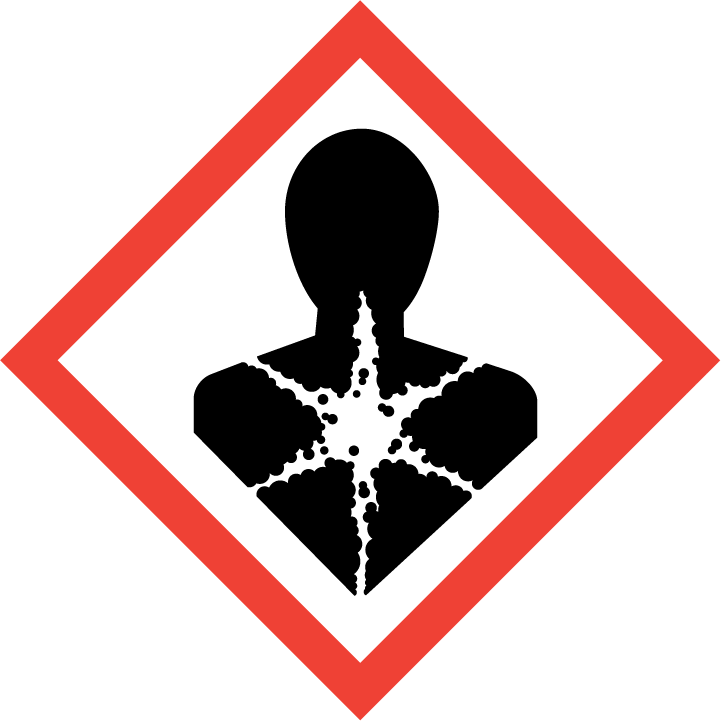  |
|---|---|
| Signal word | Danger |
| Hazard statement(s) | H301 Toxic if swallowed H311 Toxic in contact with skin H331 Toxic if inhaled H351 Suspected of causing cancer H411 Toxic to aquatic life with long lasting effects |
| Precautionary statement(s) | |
| Prevention | P264 Wash ... thoroughly after handling. P270 Do not eat, drink or smoke when using this product. P280 Wear protective gloves/protective clothing/eye protection/face protection. P261 Avoid breathing dust/fume/gas/mist/vapours/spray. P271 Use only outdoors or in a well-ventilated area. P201 Obtain special instructions before use. P202 Do not handle until all safety precautions have been read and understood. P273 Avoid release to the environment. |
| Response | P301+P310 IF SWALLOWED: Immediately call a POISON CENTER/doctor/… P321 Specific treatment (see ... on this label). P330 Rinse mouth. P302+P352 IF ON SKIN: Wash with plenty of water/... P312 Call a POISON CENTER/doctor/…if you feel unwell. P361+P364 Take off immediately all contaminated clothing and wash it before reuse. P304+P340 IF INHALED: Remove person to fresh air and keep comfortable for breathing. P311 Call a POISON CENTER/doctor/… P308+P313 IF exposed or concerned: Get medical advice/ attention. P391 Collect spillage. |
| Storage | P405 Store locked up. P403+P233 Store in a well-ventilated place. Keep container tightly closed. |
| Disposal | P501 Dispose of contents/container to ... |
none
3.Composition/information on ingredients 3.1 Substances| Chemical name | Common names and synonyms | CAS number | EC number | Concentration |
|---|---|---|---|---|
| N,N-dimethylaniline | N,N-dimethylaniline | 121-69-7 | none | 100% |
Consult a physician. Show this safety data sheet to the doctor in attendance.
If inhaledFresh air, rest. Refer for medical attention.
In case of skin contactRemove contaminated clothes. Rinse and then wash skin with water and soap. Refer for medical attention .
In case of eye contactRinse with plenty of water for several minutes (remove contact lenses if easily possible).
If swallowedRinse mouth. Refer for medical attention .
4.2 Most important symptoms/effects, acute and delayedExcerpt from ERG Guide 153 [Substances - Toxic and/or Corrosive (Combustible)]: TOXIC; inhalation, ingestion or skin contact with material may cause severe injury or death. Contact with molten substance may cause severe burns to skin and eyes. Avoid any skin contact. Effects of contact or inhalation may be delayed. Fire may produce irritating, corrosive and/or toxic gases. Runoff from fire control or dilution water may be corrosive and/or toxic and cause pollution. (ERG, 2016)
4.3 Indication of immediate medical attention and special treatment needed, if necessaryImmediate first aid: Ensure that adequate decontamination has been carried out. If patient is not breathing, start artificial respiration, preferably with a demand-valve resuscitator, bag-valve-mask device, or pocket mask, as trained. Perform CPR as necessary. Immediately flush contaminated eyes with gently flowing water. Do not induce vomiting. If vomiting occurs, lean patient forward or place on left side (head-down position, if possible) to maintain an open airway and prevent aspiration. Keep patient quiet and maintain normal body temperature. Obtain medical attention. /Aniline and related compounds/
5.Fire-fighting measures 5.1 Extinguishing media Suitable extinguishing mediaSpecial protective equipment for firefighters: Wear self contained breathing apparatus for fire fighting if necessary.
5.2 Specific hazards arising from the chemicalExcerpt from ERG Guide 153 [Substances - Toxic and/or Corrosive (Combustible)]: Combustible material: may burn but does not ignite readily. When heated, vapors may form explosive mixtures with air: indoors, outdoors and sewers explosion hazards. Those substances designated with a (P) may polymerize explosively when heated or involved in a fire. Contact with metals may evolve flammable hydrogen gas. Containers may explode when heated. Runoff may pollute waterways. Substance may be transported in a molten form. (ERG, 2016)
5.3 Special protective actions for fire-fightersWear self-contained breathing apparatus for firefighting if necessary.
6.Accidental release measures 6.1 Personal precautions, protective equipment and emergency proceduresUse personal protective equipment. Avoid dust formation. Avoid breathing vapours, mist or gas. Ensure adequate ventilation. Evacuate personnel to safe areas. Avoid breathing dust. For personal protection see section 8.
6.2 Environmental precautionsPersonal protection: chemical protection suit and filter respirator for organic gases and vapours adapted to the airborne concentration of the substance. Do NOT let this chemical enter the environment. Collect leaking and spilled liquid in sealable containers as far as possible. Absorb remaining liquid in sand or inert absorbent. Then store and dispose of according to local regulations.
6.3 Methods and materials for containment and cleaning upEnvironmental precautions: Prevent further leakage or spillage if safe to do so. Do not let product enter drains. Discharge into the environment must be avoided. Methods and materials for containment and cleaning up: Contain spillage, and then collect with an electrically protected vacuum cleaner or by wet-brushing and place in container for disposal according to local regulations... Keep in suitable, closed containers for disposal.
7.Handling and storage 7.1 Precautions for safe handlingAvoid contact with skin and eyes. Avoid formation of dust and aerosols. Avoid exposure - obtain special instructions before use.Provide appropriate exhaust ventilation at places where dust is formed. For precautions see section 2.2.
7.2 Conditions for safe storage, including any incompatibilitiesSeparated from strong oxidants, acids, acid anhydrides, acid chlorides, hypochlorites, halogens and food and feedstuffs. Well closed. Store in an area without drain or sewer access.Keep container tightly closed in a dry and well-ventilated place. Containers which are opened must be carefully resealed and kept upright to prevent leakage.
8.Exposure controls/personal protection 8.1 Control parameters Occupational Exposure limit valuesRecommended Exposure Limit: 10 Hour Time-Weighted Average: 5 ppm (25 mg/cu m).
Recommended Exposure Limit: 15 Minute Short-Term Exposure Limit: 10 ppm (50 mg/cu m), skin.
Biological limit valuesno data available
8.2 Appropriate engineering controlsHandle in accordance with good industrial hygiene and safety practice. Wash hands before breaks and at the end of workday.
8.3 Individual protection measures, such as personal protective equipment (PPE) Eye/face protectionSafety glasses with side-shields conforming to EN166. Use equipment for eye protection tested and approved under appropriate government standards such as NIOSH (US) or EN 166(EU).
Skin protectionWear impervious clothing. The type of protective equipment must be selected according to the concentration and amount of the dangerous substance at the specific workplace. Handle with gloves. Gloves must be inspected prior to use. Use proper glove removal technique(without touching glove's outer surface) to avoid skin contact with this product. Dispose of contaminated gloves after use in accordance with applicable laws and good laboratory practices. Wash and dry hands. The selected protective gloves have to satisfy the specifications of EU Directive 89/686/EEC and the standard EN 374 derived from it.
Respiratory protectionWear dust mask when handling large quantities.
Thermal hazardsno data available
9.Physical and chemical properties| Physical state | Pale Yellow to brown oily liquid, amine-like odor |
|---|---|
| Colour | Pale-yellow, oily liquid [Note: A solid below 36 degrees F] |
| Odour | Amine-like odor |
| Melting point/ freezing point | 312°C(lit.) |
| Boiling point or initial boiling point and boiling range | 194°C(lit.) |
| Flammability | Class IIIA Combustible Liquid: Fl.P. at or above 60°C and below 93.33°C.Combustible. Gives off irritating or toxic fumes (or gases) in a fire. |
| Lower and upper explosion limit / flammability limit | no data available |
| Flash point | 73°C(lit.) |
| Auto-ignition temperature | 371.11°C |
| Decomposition temperature | no data available |
| pH | no data available |
| Kinematic viscosity | 1.300 mPa.s at 25°C |
| Solubility | In water:1 g/L (20 ºC) |
| Partition coefficient n-octanol/water (log value) | log Kow = 2.31 |
| Vapour pressure | 2 mm Hg ( 25 °C) |
| Density and/or relative density | 0.956 |
| Relative vapour density | 3 (vs air) |
| Particle characteristics | no data available |
no data available
10.2 Chemical stabilityStable under recommended storage conditions.
10.3 Possibility of hazardous reactionsFlammable liquid when exposed to heat, flame, or oxidizers.Explosive decomposition occurred when finely divided benzoyl peroxide was allowed to react with N,N-DIMETHYLANILINE by breaking an ampoule containing 0.5 grams of dimethylaniline in an autoclave, NFPA 491M, 1991. This result may be expected with other peroxides and various oxidants.
10.4 Conditions to avoidno data available
10.5 Incompatible materialsExplodes on contact with benzoyl peroxide or diisopropyl peroxydicarbonate.
10.6 Hazardous decomposition productsWhen heated to decomposition it emits highly toxic fumes of aniline and NOx.
11.Toxicological information Acute toxicity- Oral: LD50 Rat oral 1410 mg/kg
- Inhalation: no data available
- Dermal: no data available
no data available
Serious eye damage/irritationno data available
Respiratory or skin sensitizationno data available
Germ cell mutagenicityno data available
CarcinogenicityEvaluation: There is inadequate evidence in humans for the carcinogenicity of N,N-dimethylaniline. There is limited evidence in experimental animals for the carcinogenicity of N,N-dimethylaniline. Overall evaluation: N,N-dimethylaniline is not classifiable as to its carcinogenicity to humans (Group 3).
Reproductive toxicityNo information is available on the reproductive or developmental effects of N,N-dimethylaniline in humans. In a study of mice exposed to N,N-dimethylaniline via gavage, no effects on survival or weight gain of dams, or birth weight, weight gain, or viability of the offspring were observed.
STOT-single exposureno data available
STOT-repeated exposureno data available
Aspiration hazardno data available
12.Ecological information 12.1 Toxicity- Toxicity to fish: LC50; Species: Pimephales promelas (fathead minnow); Conditions: flow-through bioassay with measured concentrations, 23.4°C, dissolved oxygen 7.0 mg/l, hardness 43.5 mg/l calcium carbonate, alkalinity 43.4 mg/l calcium carbonate, and pH 7.38; Concentration: 78.2 mg/L for 96 hr (confidence limit 74.2-82.4 mg/L)
- Toxicity to daphnia and other aquatic invertebrates: EC50; Species: Daphnia magna (Water flea) age 24 hr; Conditions: freshwater, static, 18-20°C, pH 8.0-8.3, dissolved oxygen 8.1-9.7 mg/L; Concentration: 29700 ug/L for 24 hr (95% confidence interval: 22000-48500 ug/L); Effect: intoxication, immobilization /99% purity
- Toxicity to algae: EC50; Species: Chlorella pyrenoidosa (Green Algae) 2x10+6 cells/mL; Conditions: freshwater, static, 22°C, pH 7.4; Concentration: 22000 ug/L for 72 hr (95% confidence interval: 19000-27000 ug/L); Effect: decreased population growth rate /99% purity
- Toxicity to microorganisms: no data available
AEROBIC: Using a mixed municipal/industrial activated sludge, 0-3% of N,N-dimethylaniline was removed over a 6 hr period at a concentration of 20 mg/L. When an industrial activated sludge that was adapted to N,N-dimethylaniline was used, 100% of the total organic carbon was removed after 6 days at a concentration of 400 mg/L. However, this test indicates that stripping may be the most important elimination process since there was no indications that biodegradation had occurred. In another test, both a municipal non-acclimated and an acclimated activated sludge were used to study the biodegradation. The non-acclimated sludge reached less than 10% of its ThOD after 28 days at a concentration of 50-200 mg/L of N,N-dimethylaniline while at the same concentration, the acclimated sludge reached 22% of its ThOD in 5 days(1). N,N-Dimethylaniline, present at 100 mg/L, reached 1.9% of its theoretical BOD in 2 weeks using an activated sludge inoculum at 30 mg/L in the Japanese MITI test(2).
12.3 Bioaccumulative potentialA BCF of 5.4 was measured in fish for N,N-dimethylaniline, at a concentration of 0.5 ppm, using carp (Cyprinus carpio) which were exposed over a 6-week period(1). According to a classification scheme(2), this BCF suggests that bioconcentration in aquatic organisms is low(SRC).
12.4 Mobility in soilThe Koc of N,N-dimethylaniline was reported to be 182(1). According to a classification scheme(2), this estimated Koc value suggests that N,N-dimethylaniline is expected to have moderate mobility in soil. The pKa of N,N-dimethylaniline is 5.15(3), indicating that this compound will exist partially in the cation form in the environment and cations generally adsorb more strongly to soils containing organic carbon and clay than their neutral counterparts(4). A Kd of 150 using montmotillonite has been reported(5).
12.5 Other adverse effectsno data available
13.Disposal considerations 13.1 Disposal methods ProductThe material can be disposed of by removal to a licensed chemical destruction plant or by controlled incineration with flue gas scrubbing. Do not contaminate water, foodstuffs, feed or seed by storage or disposal. Do not discharge to sewer systems.
Contaminated packagingContainers can be triply rinsed (or equivalent) and offered for recycling or reconditioning. Alternatively, the packaging can be punctured to make it unusable for other purposes and then be disposed of in a sanitary landfill. Controlled incineration with flue gas scrubbing is possible for combustible packaging materials.
14.Transport information 14.1 UN Number| ADR/RID: UN2253 | IMDG: UN2253 | IATA: UN2253 |
| ADR/RID: N,N-DIMETHYLANILINE |
| IMDG: N,N-DIMETHYLANILINE |
| IATA: N,N-DIMETHYLANILINE |
| ADR/RID: 6.1 | IMDG: 6.1 | IATA: 6.1 |
| ADR/RID: II | IMDG: II | IATA: II |
| ADR/RID: yes | IMDG: yes | IATA: yes |
no data available
14.7 Transport in bulk according to Annex II of MARPOL 73/78 and the IBC Codeno data available
15.Regulatory information 15.1 Safety, health and environmental regulations specific for the product in question| Chemical name | Common names and synonyms | CAS number | EC number |
|---|---|---|---|
| N,N-dimethylaniline | N,N-dimethylaniline | 121-69-7 | none |
| European Inventory of Existing Commercial Chemical Substances (EINECS) | Listed. | ||
| EC Inventory | Listed. | ||
| United States Toxic Substances Control Act (TSCA) Inventory | Listed. | ||
| China Catalog of Hazardous chemicals 2015 | Listed. | ||
| New Zealand Inventory of Chemicals (NZIoC) | Listed. | ||
| Philippines Inventory of Chemicals and Chemical Substances (PICCS) | Listed. | ||
| Vietnam National Chemical Inventory | Listed. | ||
| Chinese Chemical Inventory of Existing Chemical Substances (China IECSC) | Listed. | ||
| Creation Date | Aug 10, 2017 |
|---|---|
| Revision Date | Aug 10, 2017 |
- CAS: Chemical Abstracts Service
- ADR: European Agreement concerning the International Carriage of Dangerous Goods by Road
- RID: Regulation concerning the International Carriage of Dangerous Goods by Rail
- IMDG: International Maritime Dangerous Goods
- IATA: International Air Transportation Association
- TWA: Time Weighted Average
- STEL: Short term exposure limit
- LC50: Lethal Concentration 50%
- LD50: Lethal Dose 50%
- EC50: Effective Concentration 50%
- IPCS - The International Chemical Safety Cards (ICSC), website: http://www.ilo.org/dyn/icsc/showcard.home
- HSDB - Hazardous Substances Data Bank, website: https://toxnet.nlm.nih.gov/newtoxnet/hsdb.htm
- IARC - International Agency for Research on Cancer, website: http://www.iarc.fr/
- eChemPortal - The Global Portal to Information on Chemical Substances by OECD, website: http://www.echemportal.org/echemportal/index?pageID=0&request_locale=en
- CAMEO Chemicals, website: http://cameochemicals.noaa.gov/search/simple
- ChemIDplus, website: http://chem.sis.nlm.nih.gov/chemidplus/chemidlite.jsp
- ERG - Emergency Response Guidebook by U.S. Department of Transportation, website: http://www.phmsa.dot.gov/hazmat/library/erg
- Germany GESTIS-database on hazard substance, website: http://www.dguv.de/ifa/gestis/gestis-stoffdatenbank/index-2.jsp
- ECHA - European Chemicals Agency, website: https://echa.europa.eu/















